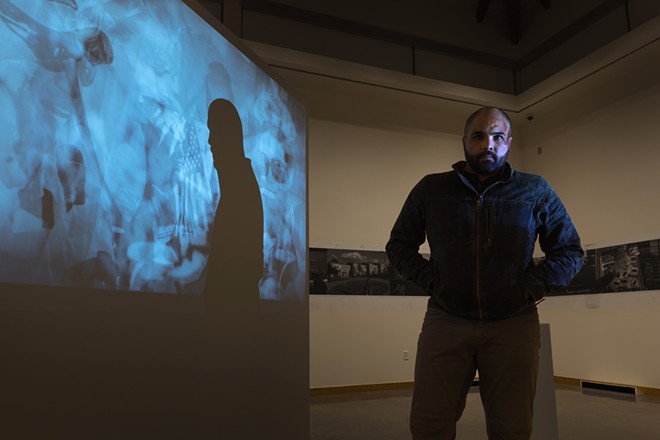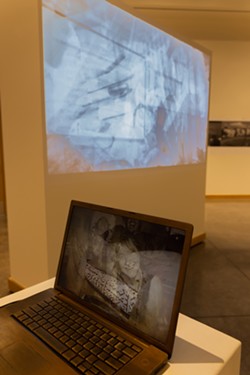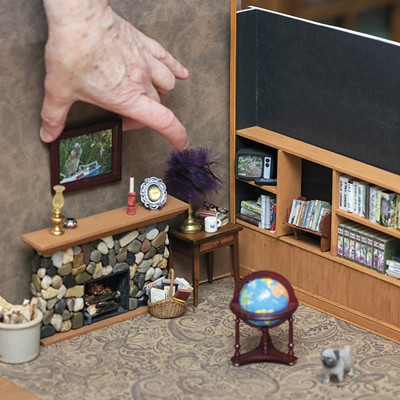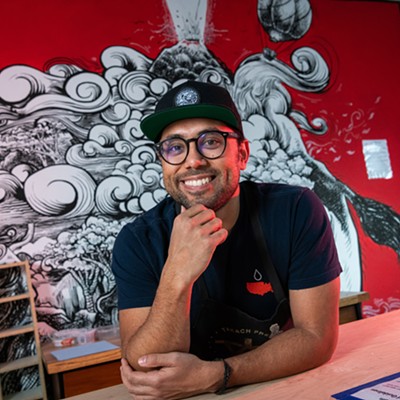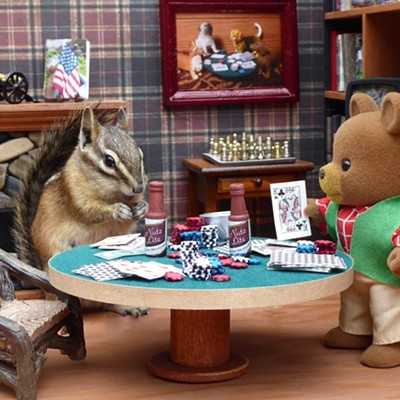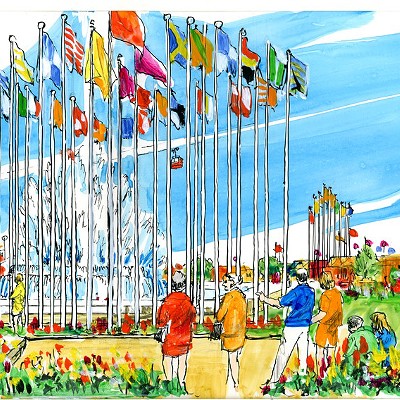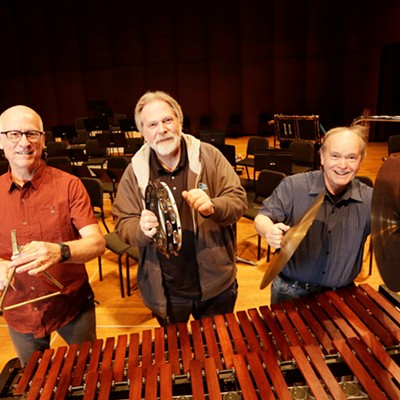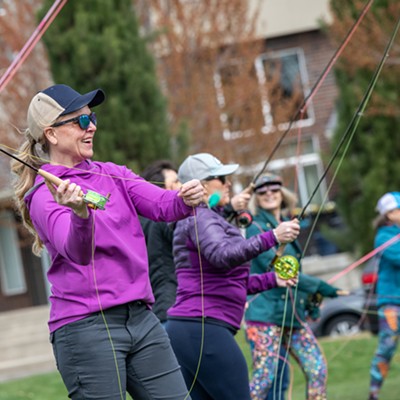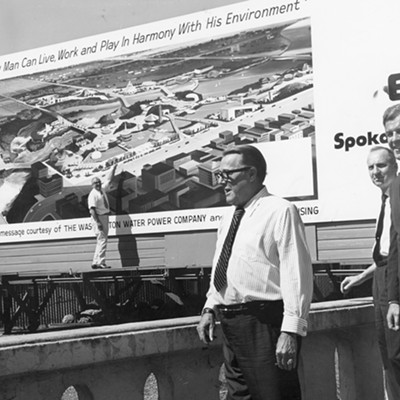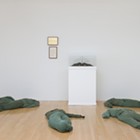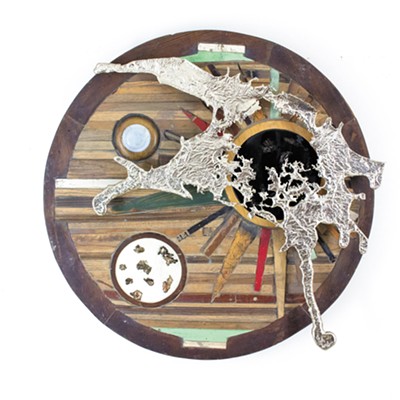Photographer Rajah Bose has spent 20 years telling other people's stories as both a commercial photographer and photojournalist. He's photographed Spokane's Jess Walter for the local author's Cold Millions book tour, covered Northwest culture for the New York Times, documented campus life for Gonzaga's marketing department and, yes, done photography for the Inlander, too. All told, Bose has made hundreds of thousands of images — closer to 2 million if you include personal photos, says Bose, who has been snapping photos since he was a teenager.
Now in his early 40s, Bose is telling his own story, using his photographs as a framework for self-discovery in an exhibition titled middlelife at Whitworth University's Bryan Oliver Gallery through March 25.
The exhibition marks a turning point for Bose, who doesn't describe himself as an artist. Last semester he and wife, Ellen Picken, — she is an artist, best known for her mural work — were co-teaching a class at Whitworth, when gallery director Lance Sinnema approached Bose about developing an art show. Drawing on the intuition that has guided his photographer's eye and shutter finger, Bose said yes.
"It almost feels like I've just been dropped in suddenly into this new world, one that I've never pursued, or been afraid to consider or think about," says Bose, whose only previous solo art show was in 2007 at Washington State University's Tri-Cities Gallery in Richland while he was working for the Tri-Cities Herald. Bose also exhibited with Picken in 2019, a few years after the couple launched their creative agency, Factory Town.
Two images from the WSU show reappear in middlelife: a framed image of Jesus atop a pile of trash bags, and a top-down view of a cake resembling an American flag being cut up and consumed. Other images are personal, like Bose holding the hefty paw of his beloved husky, who had just died.
"With [middlelife] I'm trying to take the editorial work and my documentation, observations of my own life and work, and put them all together in one and try to make something of a statement," says Bose, who spent several months reviewing nearly 50 hard drives of images.
Bose used 25,000 photographs to create a 10-minute film that runs continuously in the gallery. The speed — 30 images per second — is almost too fast for anyone but him to make any meaning from the piece. It's certainly too fast for the brain to articulate what it's seeing, a dichotomy of images versus words that Bose explores in another middlelife artwork.
Bose selected another 32 photographs to create a 2-foot-tall black-and-white frieze, or continuous strip of imagery, beginning and ending at the doorway to the gallery, reading like a giant roll of film from a distance.
Beneath the images, Bose included a continuous line of very small text, a kind of free-verse poem that refers to but doesn't specifically narrate the photographs above them.
One segment states: "the selection of images above is one version of an infinite number of stories that could have been told from the finite amount of moments collected. this is but one version of the truth."
In a role switch, choosing images for the exhibition cast Bose as editor — versus photographer — simultaneously distancing himself from the images so he could be more objective, yet still recognizing the resonant potential of each image to convey his story.
"I waited for [the photographs] to really connect me again with the storyline that is my life," says Bose, who points to the photo that occupies both the literal and metaphorical center of the narrative frieze. It's from his 2011 trip to India with his mother.
"India is a big piece of this show because it's like a missing piece in my life, I can't explain it," says Bose, whose only connection to Indian culture was his father, at least until Bose visited India for himself.
In the photo, shot from inside a car, a kid in a hooded windbreaker looks into the rolled-up passenger window at Bose and his mother seated inside. She has turned her face toward Bose, who took a photo, then filed it and forgot about it.
When he was sorting through images for the exhibit, however, something about it resonated, he says.
"In the moment, it's not the thing you express but you interpret later," says Bose, who interpreted the image as conveying a rite of passage; both the child and his mother were asking him: "What are you going to do...with your life?"
The exhibition helped provide both a way to organize the images in this visual timeline and an answer to the question, Bose says. He is pausing commercial work for two years to focus on making art.
"This is why it's 'middle life' for me," he explains. "This is a moment of choice going forward, figuring out the artist journey and what that even means." ♦
middlelife • Through March 25; open Mon-Fri from 10 am-5 pm, Sat from 10 am-2 pm • Free • Bryan Oliver Gallery, Lied Center for the Visual Arts • 300 W. Hawthorne Rd. • whitworth.edu/art • 509-777-3258

